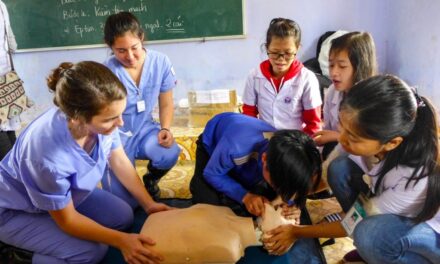
La Jolla, CA–Fast-spreading variants of the COVID-19-causing coronavirus, SARS-CoV-2, carry mutations that enable the virus to escape some of the immune response created naturally or by vaccination.
A new study from scientists at Scripps Research, along with collaborators in Germany and the Netherlands, has revealed key details of how these escape mutations work.
The scientists, whose study appears in Science, used structural biology techniques to map at high resolution how important classes of neutralizing antibodies bind to the original pandemic strain of SARS-CoV-2—and how the process is disrupted by mutations found in new variants first detected in Brazil, the United Kingdom, South Africa, and India.
The research also highlights that several of these mutations are clustered in one site, known as the “receptor binding site,” on the spike protein of the virus. Other sites on the receptor binding domain are unaffected.
“An implication of this study is that, in designing next-generation vaccines and antibody therapies, we should consider increasing the focus on other vulnerable sites on the virus that tend not to be affected by the mutations found in variants of concern,” says co-lead author Meng Yuan, PhD.
Yuan is a postdoctoral research associate in the laboratory of senior author Ian Wilson, DPhil, Hansen Professor of Structural Biology, and Chair of the Department of Integrative Structural and Computational Biology at Scripps Research.
How ‘variants of concern’ escape immune response
SARS-CoV-2 “variants of concern” include the UK’s B.1.1.7 variants, South Africa’s B.1.351 variants, Brazil’s P.1 variants and India’s B.1.617 variants. Some of these variants appear to be more infectious than the original Wuhan strain. Recent studies have found that antibody responses generated through natural infection to the original strain or via vaccination are less effective in neutralizing these variant strains.
Because of the variants’ potential to spread and cause disease—perhaps in some cases, despite vaccination—scientists consider it urgent to discover how the variants manage to escape much of the prior immune response in the body, including the antibody response.
In the study, the researchers focused mainly on three mutations in the SARS-CoV-2 spike protein: K417N, E484K and N501Y. Alone or in combination, these mutations are found in most major SARS-CoV-2 variants. All of the mutations are found in the SARS-CoV-2 receptor binding site, which the where the virus attaches to host cells.
The researchers tested representative antibodies from the major classes that target the general area in and around the receptor binding site. They found that many of these antibodies lose their ability to effectively bind and neutralize the virus when the mutations are present.
Using structural imaging techniques, the team then mapped the relevant portion of the virus at atomic-scale resolution to examine how the mutations affect sites where antibodies otherwise would bind and neutralize the virus.
“This work provides a structural explanation for why antibodies elicited by COVID-19 vaccines or natural infection by the original pandemic strain are often ineffective against these variants of concern,” Wilson says.
Zeroing in on points of vulnerability
The findings suggest that while antibody responses to the SARS-CoV-2 receptor binding site can be very potent in neutralizing the original Wuhan strain, certain variants are able to escape—perhaps eventually necessitating updated vaccines.
At the same time, the study underlines the fact that the three key viral mutations, which SARS-CoV-2 seems inherently prone to develop, do not alter other vulnerable sites on the virus outside the receptor binding site. The researchers specifically showed that virus-neutralizing antibodies targeting two other areas outside the receptor binding site were largely unaffected by these three mutations.
This suggests that future vaccines and antibody-based treatments could provide broader protection against SARS-CoV-2 and its variants by eliciting or utilizing antibodies against parts of the virus that lie outside the receptor binding site. The researchers note that broad protection against variants may be necessary if, as seems likely, the virus becomes endemic in the human population.
The Wilson lab and collaborators in this study are continuing to study human antibody responses to variants of concern and hope to identify strategies for broad protection against not only SARS-CoV-2 and its variants but also SARS-CoV-1 and other related, emergent coronaviruses.




